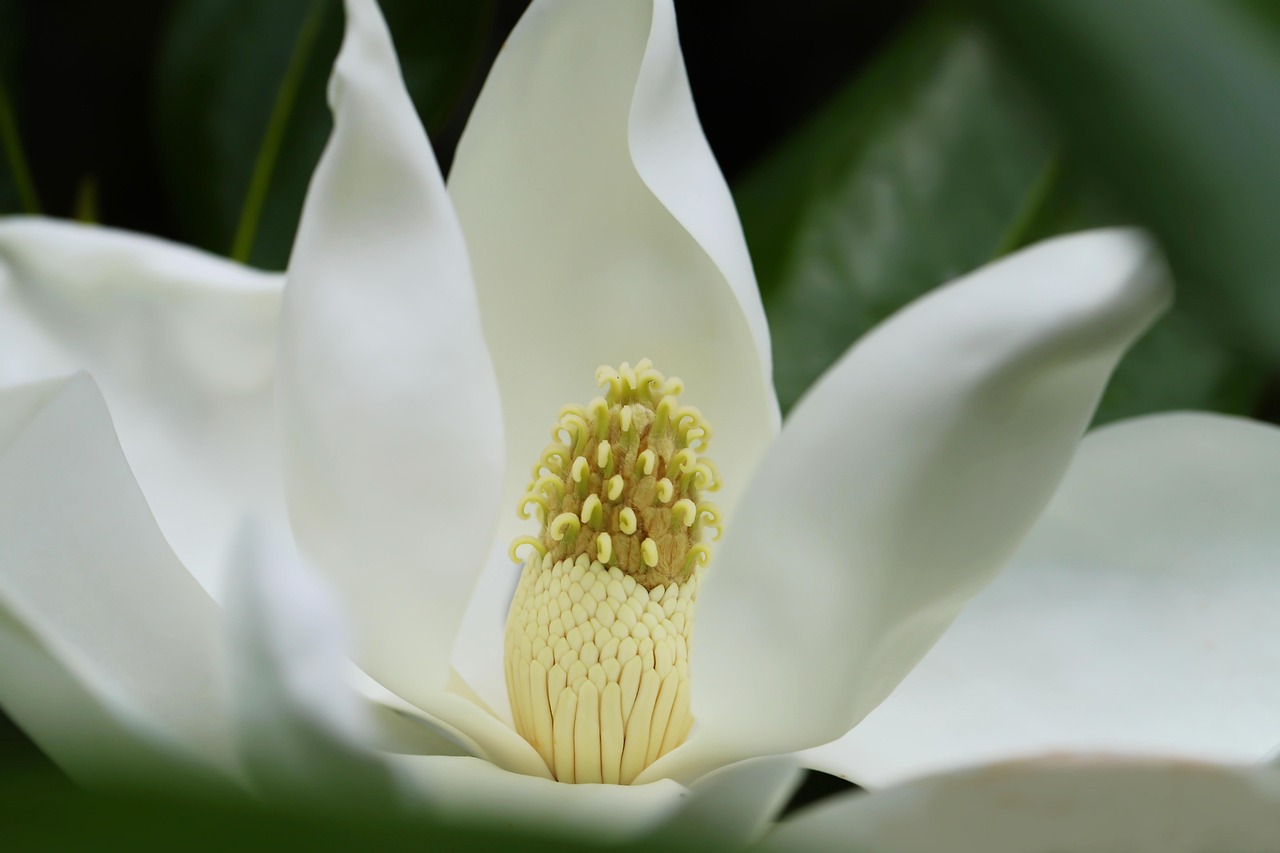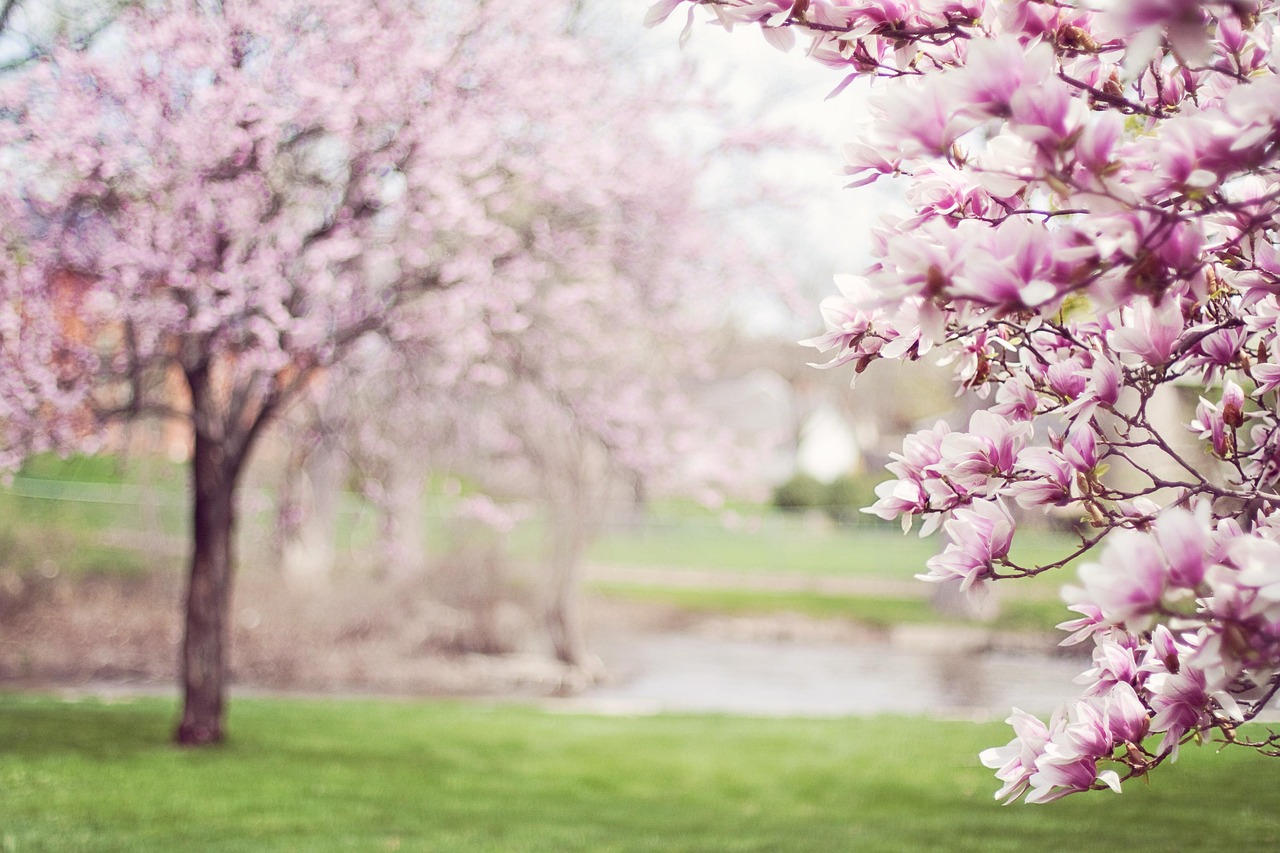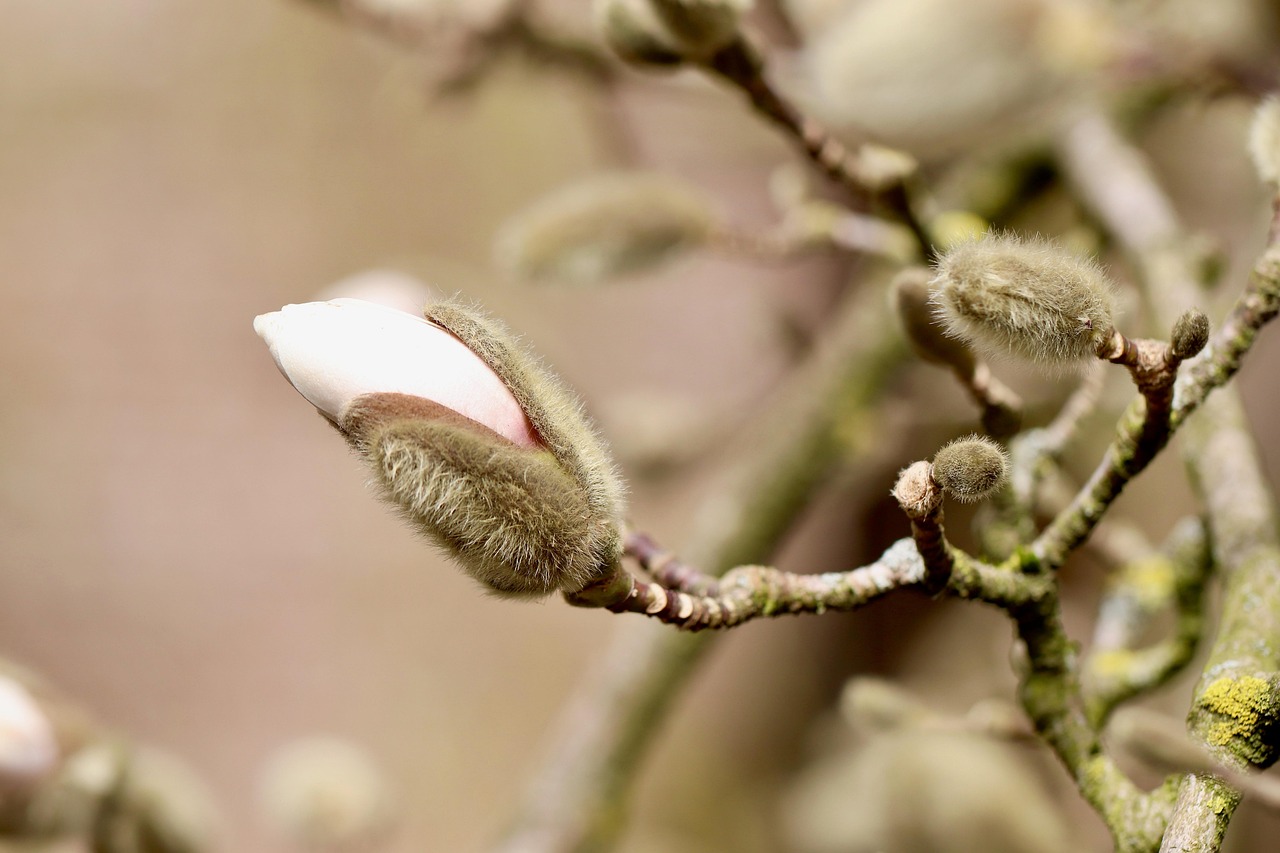Magnolia trees can be both deciduous and evergreen. Deciduous species lose their leaves in the fall, while evergreen varieties retain their foliage year-round. Understanding the type of magnolia tree is essential for recognizing seasonal changes.
Understanding Magnolia Trees

Magnolia trees are beloved for their stunning blooms and unique foliage. They belong to the Magnoliaceae family and are known for their large, fragrant flowers that can appear in various colors, including white, pink, purple, and yellow. There are over 200 species of magnolias, and they thrive in a range of environments across the world. Depending on the specific type, magnolia trees can be classified as either deciduous or evergreen.
Deciduous magnolias, such as the Southern Magnolia (Magnolia grandiflora) and the Saucer Magnolia (Magnolia × soulangeana), exhibit seasonal changes in their appearance. These trees shed their leaves during the fall months, preparing for winter dormancy. This process is a natural response to environmental conditions, allowing them to conserve energy and resources during colder months when sunlight and water are less available.
On the other hand, evergreen magnolias, like the Sweetbay Magnolia (Magnolia virginiana), maintain their leaves throughout the year. These trees can provide year-round greenery and structure to landscapes. Their leaves may gradually drop but are replaced by new growth, ensuring that the tree remains lush even in winter.
Types of Magnolia Trees
To better understand whether a magnolia tree is deciduous or evergreen, it is helpful to know some common types of magnolia trees. Below is a table summarizing various species along with their classifications:
| Species | Common Name | Type | Flower Color |
|---|---|---|---|
| Magnolia grandiflora | Southern Magnolia | Evergreen | White |
| Magnolia × soulangeana | Saucer Magnolia | Deciduous | Pink/White |
| Magnolia virginiana | Sweetbay Magnolia | Evergreen | White/Yellow |
| Magnolia stellata | Star Magnolia | Deciduous | White/Pink |
| Magnolia liliiflora | Lily Magnolia | Deciduous | Purple/Pink |
This table illustrates that while some magnolias retain their leaves throughout the year, others undergo significant changes in response to seasonal shifts. Understanding these differences is vital for gardening and landscape planning.
Seasonal Changes in Deciduous Magnolias
Deciduous magnolias experience distinct seasonal changes that are influenced by climatic conditions. In spring, these trees typically burst into bloom with large flowers that attract pollinators. The vibrant blossoms often precede leaf growth, creating a stunning visual display.
As spring transitions into summer, the focus shifts from flowers to foliage. The leaves expand and provide shade, contributing to photosynthesis. This phase is crucial for the tree’s energy production, as it prepares for the dormancy period in winter.
During autumn, deciduous magnolias begin to change color as temperatures drop. Leaves may turn shades of yellow, orange, or red before falling to the ground. This process is essential for the tree’s survival during winter months when conditions are harsh.
In winter, the bare branches of deciduous magnolias reveal their structural beauty against a snowy backdrop or gray skies. The absence of leaves allows sunlight to reach the tree’s trunk and roots more effectively, which is beneficial for its health during this dormant period.
Caring for Magnolia Trees Through Seasons
Caring for magnolia trees involves understanding their seasonal needs. Here are some tips for maintaining both deciduous and evergreen varieties:
- Spring Care: Fertilize with a balanced fertilizer after flowering to promote healthy growth.
- Summer Monitoring: Water regularly during dry spells to keep roots hydrated.
- Autumn Preparation: Rake fallen leaves to prevent disease and pests.
- Winter Protection: Mulch around the base to insulate roots during cold weather.
By following these care tips, gardeners can ensure that their magnolia trees thrive throughout the year, regardless of whether they are deciduous or evergreen.
Identifying Deciduous and Evergreen Magnolias
To understand the seasonal changes of magnolia trees, it is essential to identify whether you are dealing with a deciduous or evergreen variety. Each type has distinct characteristics that can help in identification.
Characteristics of Deciduous Magnolias
Deciduous magnolias typically exhibit the following traits:
- Leaf Drop: These trees shed their leaves in the fall, allowing for a stark appearance in winter.
- Flowering Period: Most bloom in early spring before the leaves fully emerge, creating a spectacular floral display.
- Growth Habits: They tend to grow more quickly than their evergreen counterparts but may require more care during dormancy.
Common examples of deciduous magnolias include the Star Magnolia and the Saucer Magnolia. Both species are cherished for their large, eye-catching flowers that signal the arrival of spring.
Characteristics of Evergreen Magnolias
Evergreen magnolias, on the other hand, possess different features:
- Year-Round Foliage: These trees retain their leaves throughout the year, providing continuous greenery in gardens.
- Flowering Time: They may bloom sporadically throughout the year, with some varieties flowering in late spring and others in summer.
- Growth Patterns: Evergreen magnolias generally have a slower growth rate but can live longer than deciduous types.
The Southern Magnolia is a well-known example of an evergreen magnolia, famous for its large, fragrant white flowers and glossy green leaves.
The Importance of Seasonal Changes
Understanding the seasonal changes in magnolia trees is crucial for gardeners and landscapers. Each season brings specific challenges and opportunities for care and maintenance. Recognizing these changes can enhance the health and beauty of your magnolia trees.
Spring Awakening
Spring is a vital time for magnolias. As temperatures rise, both deciduous and evergreen varieties begin to respond:
- Deciduous Trees: They will start to bud and flower, often before new leaves emerge. This stage is critical for attracting pollinators.
- Evergreen Trees: While they may not flower as abundantly, they will actively grow new leaves and branches during this time.
Proper care during spring includes ensuring adequate water supply and applying fertilizer to encourage robust growth. It is also important to monitor for pests that may emerge with warmer weather.
Summer Growth Phase
During summer, magnolia trees enter a phase of active growth. The needs for care differ slightly between deciduous and evergreen species:
- Watering: Regular watering is essential. Deciduous varieties may require more water as they expand their leaves.
- Pest Management: Monitor for any insect infestations or fungal diseases that can thrive in warm, humid conditions.
- Pruning: Light pruning can help maintain shape and encourage healthy growth for both types.
Autumn Transition
As autumn approaches, significant changes occur in deciduous magnolias:
- Leaf Color Change: Leaves of deciduous types will display vibrant colors before falling, creating a beautiful landscape.
- Preparation for Winter: It’s essential to prepare the trees by ensuring they have adequate hydration before the frost sets in. This preparation helps them endure the winter months.
For evergreen magnolias, autumn is a time to check for any signs of stress or disease, as they will continue to retain their leaves through winter.
Common Pests and Diseases
P

ests and diseases can pose challenges to magnolia trees throughout their seasonal cycles. Being aware of common issues can help in effective management.
Pests Affecting Magnolias
The following pests are often found on magnolia trees:
- Magnolia Scale: This insect attaches itself to the tree’s bark and feeds on sap, often leading to leaf drop.
- Aphids: These small insects can cluster on new growth, causing distortion and stunted development.
- Twig Borers: These pests burrow into branches, which can lead to dieback and decline in health.
Diseases Impacting Magnolias
Magnolias can also suffer from various diseases, including:
- Canker Diseases: Caused by fungi or bacteria, these diseases can kill branches or even whole trees if not addressed.
- Powdery Mildew: This fungal disease appears as a white powder on leaves, often thriving in humid conditions.
- Root Rot: Overwatering or poorly drained soil can lead to root rot, a serious issue that may require replanting.

Regular monitoring and prompt treatment are essential to prevent these pests and diseases from impacting the health of your magnolia trees. Taking proactive measures can help ensure they remain vibrant and beautiful throughout the seasons.
Planting and Propagating Magnolia Trees
Planting magnolia trees requires careful consideration of their needs and preferences. Whether you choose a deciduous or evergreen variety, the planting process can significantly impact the tree’s development and health.
Choosing the Right Location
Magnolias thrive in specific environmental conditions. When selecting a location for planting, consider the following factors:
- Sunlight: Magnolias prefer full sun to partial shade. Ideally, they should receive at least six hours of direct sunlight daily.
- Soil Type: Well-drained, loamy soil is best for magnolias. They do not tolerate heavy clay or overly sandy soils.
- Space: Ensure ample space around the tree. Magnolia trees can grow quite large, so they need room to spread their branches.
Planting Magnolias
The planting process is crucial for establishing a healthy magnolia tree. Follow these steps for successful planting:
- Prepare the Soil: Before planting, amend the soil with compost to improve drainage and fertility.
- Dig the Hole: Dig a hole that is twice as wide as the root ball but not deeper than the root system. This allows for proper root expansion.
- Place the Tree: Position the magnolia tree in the center of the hole, ensuring that the top of the root ball is level with the surrounding soil.
- Backfill Carefully: Fill in the hole with soil, gently packing it around the roots to eliminate air pockets.
- Water Thoroughly: After planting, water the tree deeply to help settle the soil and provide moisture to the roots.
- Add Mulch: Apply a layer of mulch around the base to retain moisture and suppress weeds.
Propagation Methods
Magnolia trees can be propagated through various methods, including seeds, cuttings, and grafting. Each method has its advantages and challenges:
Seed Propagation
Growing magnolias from seeds can be rewarding but requires patience:
- Harvesting Seeds: Collect seeds from ripe magnolia fruits in late summer or early fall.
- Stratification: Seeds often need a cold stratification period. This involves placing them in moist sand in a refrigerator for several weeks to simulate winter conditions.
- Sowing Seeds: After stratification, sow seeds in well-drained soil and keep them moist until germination occurs.
Cuttng Propagation
Taking cuttings is another viable method for propagating magnolias:
- Selecting Cuttings: Choose healthy, semi-hardwood cuttings in late summer or early fall.
- Treating Cuttings: Dip the cut end in rooting hormone to encourage root development.
- Rooting Medium: Place cuttings in a mixture of perlite and peat moss, keeping them moist and in indirect light until roots form.
Grafting Techniques
Grafting is a method often used for specific magnolia varieties:
- Cleft Grafting: This technique involves joining a scion (the new growth) onto a rootstock. This method is effective for propagating desired traits.
- Budding: Budding involves placing a bud from one tree onto another tree’s bark. This can be used for cloning specific cultivars.
The Role of Magnolias in Landscaping
Magnolia trees are not only beautiful but also serve important roles in landscaping. Their large flowers, attractive foliage, and varying sizes make them versatile choices for various settings.
Aesthetic Appeal
The striking appearance of magnolia trees adds visual interest to gardens and landscapes:
- Blooming Colors: The flowers come in various colors, allowing for diverse landscape designs.
- Foliage Texture: Their broad leaves provide a lush backdrop, enhancing other plants’ beauty.
- Year-Round Interest: Evergreen varieties contribute greenery throughout all seasons, while deciduous types offer seasonal color changes.
Ecosystem Benefits
Beyond aesthetics, magnolias play a vital role in local ecosystems.
- Pollinator Attraction: The fragrant blooms attract bees, butterflies, and other pollinators, supporting biodiversity.
- Wildlife Habitat: Leaves provide shelter for various insects and small animals, contributing to a balanced ecosystem.
- Air Quality Improvement: Trees absorb carbon dioxide and release oxygen, enhancing air quality in urban environments.
Cultural Significance
In many cultures, magnolia trees hold symbolic meanings. They represent dignity, nobility, and perseverance due to their ability to thrive in diverse conditions. Some cultures use magnolias in traditional medicine or as ornamental plants during special occasions.
This cultural significance adds another layer to the value of magnolia trees in landscaping and gardening efforts. By incorporating these trees into outdoor spaces, individuals can connect with nature while enhancing their surroundings.
Maintenance and Care Throughout the Year
To

ensure the longevity and health of magnolia trees, regular maintenance is essential. This involves monitoring their needs throughout the seasons and addressing any issues that may arise.
Seasonal Care Strategies
Each season presents different care requirements for magnolia trees:
- Spring: After the last frost, clean up any debris around the tree. Fertilize with a slow-release, balanced fertilizer to support new growth. Watch for pests as they become active.
- Summer: Maintain consistent moisture by watering deeply, especially during dry spells. Mulch around the base can help retain moisture and regulate soil temperature.
- Autumn: Rake leaves to minimize disease risk. This is also a good time to check for any signs of pests and treat them accordingly.
- Winter: Protect young trees from frost with burlap wraps or mulch. Ensure that snow does not accumulate on branches, as it can lead to breakage.
Common Issues and Solutions
Even with proper care, magnolias can face challenges. Here are some common issues and effective solutions:
- Pest Control: Use insecticidal soap or neem oil to manage insect infestations. Always follow label instructions for safety and effectiveness.
- Fungal Diseases: Apply fungicides at the first sign of fungal infections. Ensure good air circulation around the tree to minimize humidity.
- Nutrient Deficiency: Yellowing leaves may indicate nutrient deficiency. A soil test can help determine what nutrients are lacking, allowing for targeted fertilization.
Choosing the Right Magnolia for Your Landscape
When planning to incorporate magnolias into your landscape, consider factors such as space, climate, and aesthetic preferences. Different species may suit different environments better:
- For Smaller Spaces: The Star Magnolia is a compact variety that fits well in smaller gardens and urban settings.
- For Larger Landscapes: The Southern Magnolia offers grandeur and is ideal for expansive gardens, providing shade and beauty.
- Climate Considerations: Some varieties are more suited to specific climates. For instance, the Sweetbay Magnolia thrives in wetter conditions, making it suitable for low-lying areas.
The Future of Magnolia Trees
As climate change continues to impact ecosystems globally, understanding how magnolia trees adapt to changing conditions becomes increasingly important. Research is ongoing into how various species cope with shifting temperatures, varying precipitation patterns, and new pest pressures.
Conservation efforts focus on preserving native magnolia species, which play vital roles in local ecosystems. Planting native varieties supports biodiversity and helps maintain healthy ecosystems.
Final Thoughts
Magnolia trees are a remarkable addition to any landscape, offering beauty, ecological benefits, and cultural significance. Whether deciduous or evergreen, these trees bring vibrant colors and lovely fragrances that enhance outdoor spaces throughout the year.
Understanding the differences between deciduous and evergreen magnolias allows gardeners and landscapers to make informed choices about planting and care. By considering seasonal changes, maintenance needs, and environmental factors, you can ensure that your magnolia trees thrive for generations to come.
Incorporating magnolias into your garden not only beautifies the space but also supports local wildlife and contributes positively to the environment. As we embrace these magnificent trees in our landscapes, we also celebrate their resilience and adaptability, forging a deeper connection with nature.
